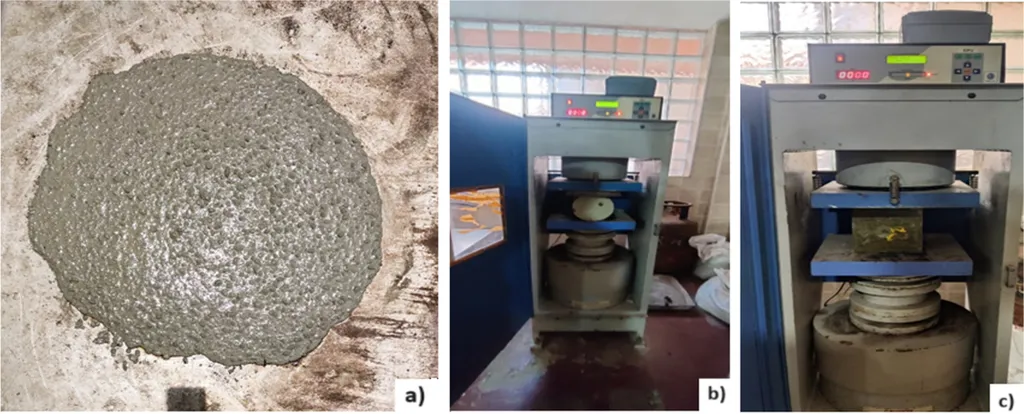In the quest for sustainable construction materials, a team of researchers led by Ujwal M S. from the Department of Civil Engineering at Dayananda Sagar College of Engineering in Bangalore, India, has made a significant breakthrough. Their study, published in the journal *Results in Engineering* (translated from Russian as “Results in Engineering”), explores the potential of egg shell powder (ESP) and fish scale powder (FSP) as partial cement replacements in self-compacting concrete (SCC). The findings could have profound implications for the energy sector, where sustainable construction practices are increasingly in demand.
The research team conducted a comprehensive experimental program to evaluate the rheological, mechanical, durability, and microstructural properties of SCC mixtures incorporating varying dosages of ESP (4–16%) and FSP (1–4%). The results were promising, demonstrating that these biomaterial-based cement substituents could effectively reduce the environmental burden without compromising the performance of SCC.
“Our goal was to find eco-friendly alternatives to traditional cementitious materials that could maintain the desired properties of SCC,” said Ujwal M S., the lead author of the study. “The incorporation of ESP and FSP not only reduces the need for cement but also utilizes waste materials that would otherwise be discarded, contributing to a circular economy.”
The study revealed that while all the mixtures retained acceptable rheological behavior, higher dosages of ESP slightly decreased flowability. Mechanically, the compressive strength of the mixture with 16% ESP (ESP16) reached a peak of 35.30 MPa at 28 days, equivalent to that of the control mixture. However, the mixture with 2% FSP (FSP2) showed a 13.2% reduction in compressive strength. Interestingly, FSP2 achieved the highest split tensile strength, a 5.2% increase over the control mixture, while ESP16 had the lowest.
“These findings highlight the potential of ESP and FSP as supplementary cementitious materials,” Ujwal M S. explained. “The variations in mechanical properties suggest that the optimal dosage of these biomaterials needs to be carefully determined to achieve the desired performance.”
Durability tests, including rapid chloride penetration and water penetration depth, demonstrated significant improvements in the mixtures with FSP. The mixture with 4% FSP (FSP4) achieved the lowest charge passed and the minimum water penetration depth, indicating enhanced durability. Microstructural analysis confirmed denser matrix formation and reduced porosity in the ESP and FSP blends, further supporting the durability results.
The implications of this research for the energy sector are substantial. As the demand for sustainable construction practices grows, the use of biomaterial-based cement substituents like ESP and FSP could reduce the environmental impact of concrete production. This is particularly relevant for energy infrastructure projects, where durability and sustainability are critical considerations.
“Our findings underscore the potential of ESP and FSP as eco-friendly alternatives to traditional cementitious materials,” Ujwal M S. concluded. “By optimizing the use of these biomaterials, we can contribute to more sustainable construction practices and reduce the environmental burden of the energy sector.”
As the construction industry continues to evolve, the integration of sustainable materials like ESP and FSP could shape the future of self-compacting concrete. This research not only advances our understanding of biomaterial-based cement substituents but also paves the way for more innovative and eco-friendly construction solutions.

